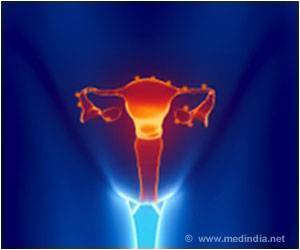Timed birth (planned birth) strategies such as scheduled labor inductions or Cesarean deliveries (C-sections) may lower the risk of at-term preeclampsia.

What is Preeclampsia?
Preeclampsia is the most dangerous form of high blood pressure (≥140/90 mm Hg) during pregnancy, and it is a leading cause of maternal death worldwide. Preeclampsia is potentially life-threatening and affects 1 in 25 pregnancies in the United States. The condition is typically diagnosed after 20 weeks of pregnancy. Symptoms include headaches, vision changes and swelling of the hands, feet, face or eyes for the mother; or a change in the well-being of the baby. Preeclampsia also indicates that there is an increased risk of developing heart health complications for women later in life.‘At-term preeclampsia can be prevented by timed birth strategies like scheduled labor inductions or Cesarean deliveries (C-sections).’
Read More..




Preterm delivery may be considered an option for women who develop preeclampsia during weeks 20-36 of pregnancy; however, most preeclampsia occurs during the time frame called at-term, which is between 37-42 weeks of pregnancy. While screening for preeclampsia is routine during pregnancy, there are limited treatment options that are proven safe and effective. Low-dose aspirin more than halves the risk of preterm preeclampsia among women at risk, however, aspirin does not affect the risk of at-term preeclampsia , which is three times more common than preterm preeclampsia and associated with more complications for mothers and babies. Read More..
Can C-section Prevent At-term Preeclampsia?
Timed birth strategies, including induced labor and Cesarean deliveries that are planned in advance, are already widely practiced for various reasons. However, they are seldom used as an intervention to prevent at-term preeclampsia.“Timed birth is achievable in many hospitals or health centers,” said lead study author Laura A. Magee, M.D., a professor of women’s health at King’s College in London, “so our proposed approach to prevent at-term preeclampsia has huge potential for global good in maternity care.”
Researchers examined more than 10 years of health records for nearly 90,000 pregnancies at two hospitals (King’s College Hospital, London and Medway Maritime Hospital, Gillingham) in the U.K. There were 57,131 pregnancies with health records at 11 to 13 weeks (between 2006 and 2017), in which there were 1,138 cases of at-term preeclampsia; and 29,035 pregnancies at 35 to 36 weeks (between 2016 and 2018), in which there were 619 cases of at-term preeclampsia. In the analysis, researchers evaluated risk of preeclampsia and potential benefits of timed birth for both groups with standard clinical criteria for preeclampsia and a risk prediction model (computer program that predicts risk of preeclampsia based on various individual factors, such as maternal history, blood pressure, ultrasound and blood tests).
The majority of women in the dataset were in their early 30s, self-identified as white and had a body mass index at the upper limits of normal. About 10% of the women in the analysis also self-identified as smokers; fewer than 3% had a medical history of high blood pressure, Type 2 diabetes or an autoimmune disease; and only 3.9% reported a family history of preeclampsia.
At-term preeclampsia occurred with similar frequency when participants screened during the first trimester were compared with those screened during the third trimester. On average, women included in the study delivered at 40-weeks, and two-thirds of all participants experienced spontaneous onset of labor. About one-fourth of the women included in the analysis had Cesarean deliveries.
Advertisement
“Our findings suggest that over half of the cases of at-term preeclampsia may be prevented by timed (planned) birth,” said Magee. “It is important to note that being at higher risk of at-term preeclampsia was associated with earlier spontaneous onset of labor, so women at the highest risk were already less likely to deliver close to their due date.”
Advertisement
In February 2023, the American Heart Association released a scientific statement, Optimizing Prepregnancy Cardiovascular Health to Improve Outcomes in Pregnant and Postpartum Individuals and Offspring, which details the benefits of early interventions to support pre- and interpregnancy (during pregnancy) cardiovascular health.
The statement highlighted interventions related to diet, smoking cessation and weight reduction that may reduce the frequency of adverse pregnancy outcomes at birth (such as hypertensive disorders of pregnancy, pre-term birth, small-for-gestational-age birth or gestational diabetes).
Additional research is needed to better understand the relationship between comprehensive prepregnancy cardiovascular health care and the frequency of adverse pregnancy outcomes.
Source-Eurekalert











